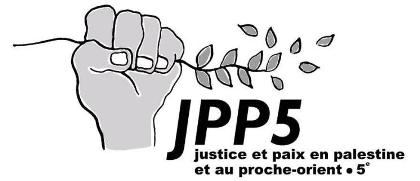Quelles que soient les relations bilatérales, la sécurité d’Israël n’est pas négociable pour les États-Unis
Décryptage
La coopération entre les deux pays renforcée par un accord militaire historique.
Amaury DESHAIES | OLJ
11/10/2016
Un nouveau record : 38 milliards de dollars entre 2019 et 2028. Tel est le montant de l'aide militaire dont bénéficiera Israël suite à l'accord signé le 14 septembre dernier avec les États-Unis. Le président américain Barack Obama a salué le « plus grand accord d'aide militaire bilatérale dans l'histoire des États-Unis » via un communiqué de la Maison-Blanche. À court terme, l'État hébreu profitera de ces milliards de dollars pour moderniser son aviation militaire, comme l'a fait savoir le Premier ministre Benjamin Netanyahu le 4 juillet dernier. La modernisation du « Dôme de fer », le système antimissile israélien, devrait également être à l'ordre du jour.
Cet accord et son ampleur restent pourtant surprenants après les deux mandats d'Obama durant lesquels les relations israélo-américaines furent particulièrement mauvaises. Malgré les efforts de l'administration Obama en faveur d'une solution à deux États, le processus de paix israélo-palestinien se trouve toujours dans l'impasse. Déjà en 2013, un haut responsable de l'administration américaine reprochait en privé au dirigeant israélien sa « lâcheté » face au défi politique que représente la résolution de ce conflit historique. M. Netanyahu ne s'était pas démonté et avait maintenu sa politique de colonisation en Cisjordanie, malgré les condamnations officielles américaines. Sur la question iranienne, il avait en outre, le 1er mars 2015 lors d'une visite à Washington, critiqué officiellement le processus de négociation qui allait aboutir, le 14 juillet, à un accord sur le nucléaire.
(Pour mémoire : Hillary Clinton promet de préserver "l'avantage militaire" d'Israël)
Un accord qui dépasse les clivages partisans
Pourtant, quelles que soient les relations bilatérales, la sécurité d'Israël n'a jamais été négociable pour Washington. C'est à la fois le fruit de décennies de coopération entre les deux États, mais aussi le résultat du soutien de groupes d'intérêts favorables à Israël aux États-Unis qui militent dans ce sens. Au premier rang desquels le lobby Aipac, qui s'assure de la continuité du soutien de Washington à Israël. Sébastien Boussois, docteur en science politique et auteur d'Israël entre 4 murs, rappelle en effet que « quelles que soient les affinités, il existe un soutien indéfectible des États-Unis envers Israël ».
L'instabilité régionale ne fait d'ailleurs que « renforcer pour l'État hébreu le besoin permanent de se sursécuriser », poursuit-il, interrogé par L'Orient-Le Jour. À ce titre, à la suite de l'accord sur le nucléaire, le chef d'état-major israélien, Gadi Eisenkot, s'inquiétait « de la volonté hégémonique de l'Iran sur la région, notamment à travers son soutien au Hezbollah au Liban et au Hamas à Gaza ». Israël avait donc tout intérêt à parvenir à un accord avant 2018, date à laquelle se termine l'actuel contrat de 30 milliards de coopération bilatérale signé en 2007.
(Lire aussi : Les logiciels espions, une spécialité israélienne)
Politiques parallèles
Barah Mikail, directeur de Stractegia Consulting et professeur associé à l'université Saint Louis, estime, lui aussi, qu'« il n'existe pas de corrélation automatique entre la nature des relations militaires américano-israéliennes et le soutien américain à une résolution du conflit israélo-palestinien ». En effet, les États-Unis n'investissent pas moins dans la sécurité d'Israël même quand ils favorisent le processus de paix. En son temps, Bill Clinton avait aussi bien assuré la coopération militaire bilatérale entre l'État hébreu et les États-Unis, qu'encouragé le processus de paix avec la signature des accords d'Oslo en 1994. La ligne politique du président Obama sur le sujet s'inscrit dans cette logique et le nouvel accord avait donc de fortes chances d'aboutir avant l'élection présidentielle de novembre.
Soutenir l'industrie militaire US
Enfin, avec cet accord, les Américains n'ont pas laissé passer l'occasion de soutenir leur l'industrie de défense pour la prochaine décennie. Cela aussi, passe outre les couleurs politiques des présidents américains. L'accord stipule notamment qu'à partir de la sixième année, les Israéliens ne pourront plus utiliser l'argent américain pour passer commande à leur propre industrie de défense. C'est actuellement le cas pour plus de 20 % des 3,1 milliards que l'État hébreu reçoit annuellement dans le cadre de l'accord actuel. In fine, l'exécutif américain aura réussi à financer de manière indirecte son complexe militaro-industriel.


